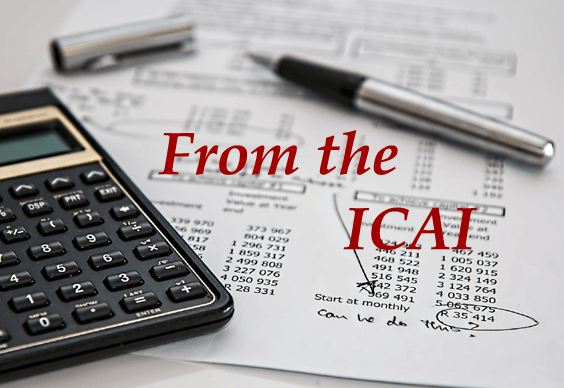GST late fee waiver:
Last opportunity to avoid GST notice due to non-filing of GSTR-9C, do this by March 31
Jan 24, 2025
Synopsis
Goods and Service Tax (GST): The government has announced waiver of late fees for filing GSTR-9C for FY 2017-18, FY 2018-19, FY 2019-20, FY 2020-21, FY 2021-22 or FY 2022-23. File GSTR-9C on or before March 31, 2025 and then request the GST proper officer to cancel the show cause notice (SCN) thereby stopping the GST demand.
The Ministry of Finance has issued a notification relevant for Goods and Service Tax (GST) registered taxpayers who failed to file the annual reconciliation statement through the GSTR-9C form. As per the circular eligible GST taxpayers now have an opportunity to get a waiver of any pending late fees for filing GSTR-9C for FY 2017-18, FY 2018-19, FY 2019-20, FY 2020-21, FY 2021-22 or FY 2022-23. However, there is a catch which is you need to file any pending GSTR-9C on or before March 31, 2025, if you want the benefit of waiver of late fees.
The original deadline to file GSTR-9 and GSTR-9C, both for any particular financial year is December 31. While the GSTR-9 annual return can very well be filed without the GSTR-9C return, the law recommends both the returns be filed together. The present notification is relevant for those taxpayers who didn’t follow this recommendation and skipped filing GSTR-9C.
What did the Finance Ministry say about waiver of late fees for filing GSTR-9C after the deadline
“The Central Government on recommendations of the Council, hereby waives the amount of late fees for financial years 2017-18, or 2019-20 or 2020-21 or 2021-22 or 2022-23, which is in excess of the late fee payable under section 47 up to the date of furnishing of FORM GSTR-9 for the said financial year, for the class of registered persons, who were required to furnish reconciliation statement in FORM GSTR-9C along with the annual return in FORM GSTR-9 for the said financial year but failed to furnish the same along with the said return in GSTR-9, and furnish the said statement in FORM GSTR-9C, subsequently on or before the 31st March, 2025. Provided that no refund of late fee already paid in respect of delayed furnishing of FORM GSTR-9C for the said financial years shall be available.
Chartered Accountant Deep Koradia says, “The notification has waived off late fees for filing GSTR-9C, If a taxpayer has filed GSTR-9 on or before the deadline then late fees for GSTR-9C will not be levied now (for FY 2017-18 to 2022-23). Another situation where a taxpayer has filed GSTR-9 after the deadline but paid the late fees then GSTR-9C late fees would not be separately levied. However, in the past the GST department has issued show cause notices (SCNs) for non-payment of late fees for late filing GSTR-9C. Now after this notification a taxpayer can reply to these SCNs and request the GST proper officer to drop the case and give relief from late fees. It is pertinent to mention that if such late fees on GSTR-9C have already been paid, then refund won't be granted for the same”
Chartered Accountant Bimal Jain, founder, A2Z Taxcorp says, “If a GST registered person fails to use this last opportunity to file GSTR-9C return, after filing year wise GSTR 1 and GSTR 3B return with due reconciliation with GSTR 2A/ GSTR 2B , then, the department at the time of scrutiny of GST Returns, GST Audit, Inspection & Search may initiate a proceedings for any variances in outward supplies and tax payable thereon, GST Credit with its purchase with reverse charge mechanism (RCM) liabilities against that person and may also issue a show cause notice either under section 73 (non-fraud) or section 74 (fraud), as the case may be.”
Jain explains the importance of GSTR-9C. “The GSTR-9C statement acts as a base and is stated to be a self-certified reconciliation statement with annual return (GSTR 9) for the GST authorities to verify the correctness of the GST returns filed by the taxpayers after a self-certification. The department may also interpret non-filing of GSTR-9C as an intention to suppress, misstatement and fraudulent to evade taxes.”
Who needs to file GSTR-9C and GSTR-9?
Jain says the applicability of GSTR-9C is determined based on the aggregate turnover of a taxpayer in a financial year. Over the years, the threshold limits and requirements for filing GSTR-9C have undergone changes. Here's a year-wise breakdown since 2017:
| Financial year | Aggregate Turnover Threshold for GSTR-9C Filing | Certification Requirement |
| 2017-18 | Above Rs 2 crore | Mandatory |
| 2018-19 | Above Rs 5 crore | Mandatory |
| 2019-20 | Above Rs 5 crore | Mandatory |
| 2020-21 | Above Rs 5 crore | Self-certification |
| 2021-22 | Above Rs 5 crore | Self-certification |
| 2022-23 | Above Rs 5 crore | Self-certification |
Source: CA Bimal Jain
2017-18: Taxpayers with an aggregate turnover exceeding Rs 2 crores were required to file GSTR-9C, which had to be certified by a Chartered Accountant (CA) or Cost Accountant (CMA).
2018-19 and 2019-20: The threshold limit for mandatory filing of GSTR-9C was increased to Rs 5 crore. Certification by a CA or Cost Accountant remained mandatory.
2020-21 onwards: While the threshold limit remained at Rs 5 crore, the requirement for certification by a CA or Cost Accountant was removed. Taxpayers could self-certify the GSTR-9C form.
[The Economic Times]

